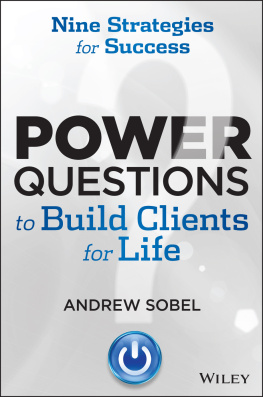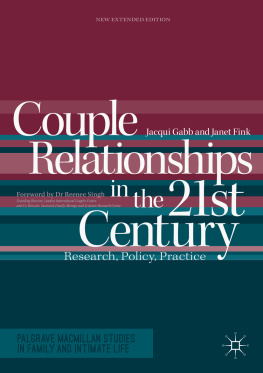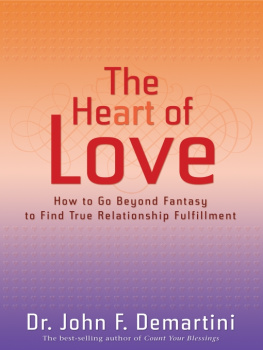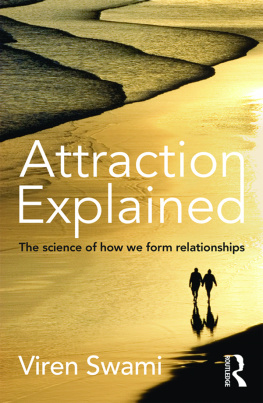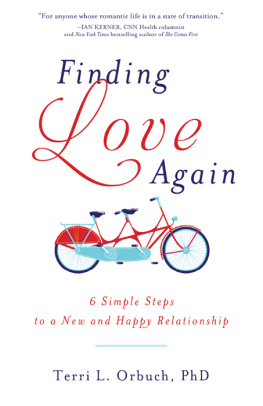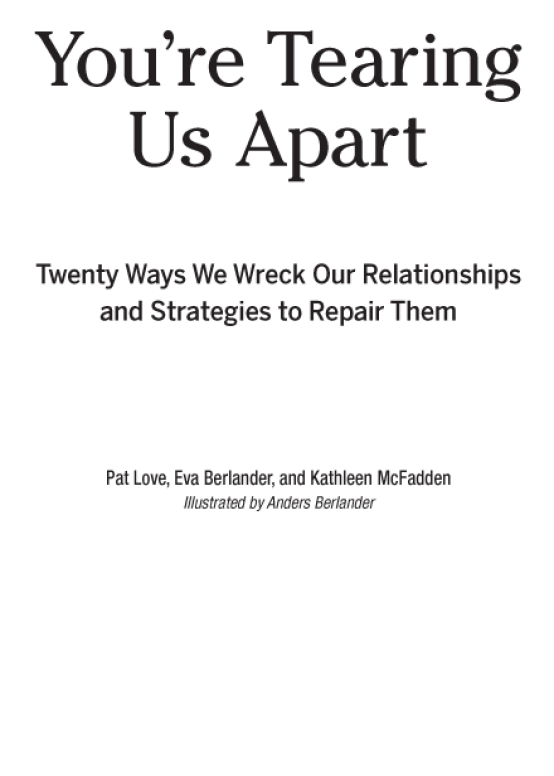

Health Communications, Inc.
Deerfield Beach, Florida
www.hcibooks.com
Library of Congress Cataloging-in-Publication Data
is available through the Library of Congress
2015 Pat Love, Eva Berlander, and Kathleen McFadden
ISBN-13: 978-07573-1862-7 (Paperback)
ISBN-10: 07573-1862-2 (Paperback)
ISBN-13: 978-07573-1863-4 (ePub)
ISBN-10: 07573-1863-0 (ePub)
All rights reserved. Printed in the United States of America. No part of this publication may be reproduced, stored in a retrieval system, or transmitted in any form or by any means, electronic, mechanical, photocopying, recording, or otherwise, without the written permission of the publisher.
HCI, its logos, and marks are trademarks of Health Communications, Inc.
Publisher:
Health Communications, Inc.
3201 S.W. 15th Street
Deerfield Beach, FL 334428190
Cover illustration by Anders Berlander
Cover and interior design by Lawna Patterson Oldfield
ePub created by Dawn Von Strolley Grove
Contents
Acknowledgments
Authors Note: Why This Book?
Introduction: Youre Tearing Us Apart
1.Your Criticism Is Tearing Us Apart
2.Your Mood Swings Are Tearing Us Apart
3.Your Porn/Chat Room Use Is Tearing Us Apart
4.Your Spending Is Tearing Us Apart
5.Your Technology Use Is Tearing Us Apart
6.Your Work Is Tearing Us Apart
7.Your Sexual Withholding Is Tearing Us Apart
9.Your Overinvolved Parenting Is Tearing Us Apart
10.Your Controlling Behavior Is Tearing Us Apart
11.Your Sexual Demands Are Tearing Us Apart
12.Your Distance Is Tearing Us Apart
13.Your Anxiety/Depression Is Tearing Us Apart
14.Your Anger Is Tearing Us Apart
15.Your Addiction Is Tearing Us Apart
16.Your Affair Is Tearing Us Apart
17.Your Selfishness Is Tearing Us Apart
18.Your Communication Style Is Tearing Us Apart
19.Your Overfunctioning, Micromanaging Behavior Is Tearing Us Apart
20.Growing Apart Is Tearing Us Apart
21.Avoid the Wear and TearShortcuts to a Great Relationship
IN FIFTY YEARS OF TRAINING weve come across many great teachers who whisper from the pages of this book. A comprehensive list would be too difficult to remember and too long to read. At times, however, a teacher comes along who dramatically influences the way you think and must be recognized; Dan Siegel is one of those. His approach to interpersonal neurobiology in general, and the integration of differentiated parts in specific, are fundamental elements of the change process required to keep our relationships stable and satisfying. We appreciate his brilliance and professional generosity.
Steven Stosnys work also is evidenced in the pages that follow. His insights related to core values have helped thousands of individuals and couples regain personal integrity and turn problems into progress.
Living with an author requires an expected amount of patience and support, but when there are three authors and two continents involved, even more is entailed. Sven, Anders, and Nikolas Berlander can attest to this. While supporting Eva in her writing they also embraced more than one U.S. invasion in their home for days at a time. On the other side of the Atlantic, Larry, Devin, and Katie had to hold down the fort while Pat and Kathleen worked, but also relished that unique Scandinavian hospitality. Thank you all for being there.
Finally, Christine Belleris didnt shy away from the prospect of two Texans and a Swede writing together with another Swede illustrating it all. She encouraged us, believed in the project, and saw how powerful this innovative book could be. We needed that! Our appreciations go to you, Christine.
T HE DIVORCE RATE HOVERS around 50 percent in the United States, and 30 percent of those who are still married report living separate lives. Alarmingly, about 60 percent of couples who ultimately divorce come from low-conflict marriages that have a great chance of surviving and thriving with minimal change. Many broken relationships not only can be mended, but magnificent.
Few would argue against the fact that life in the twenty-first century is far more complicated. Todays relationships face enormous pressure and time constraints not seen a mere generation ago. One recent study found that couples spend only thirty-five minutes per week in intimate conversation; the rest of the time they rely on electronic contact and sticky notes. Gone are the times when two people sat down each evening and leisurely discussed happenings of the day. Instead, couples are texting, tweeting, and exchanging emotions for emoticons. This fast-paced life calls for fast-paced strategies, and this book is full of them!
For convenience and efficiency each chapter follows a simple, get-to-the-point formula. First, a narrative describes what its like living with someone who is practicing relationship-threatening behaviors. The original artwork in each chapter illustrates the significance of these behaviors even further. Next, we explain the psychology behind the behavior, followed by a succinct account of why each behavior threatens relationships. Finally, we spell out results-oriented strategies for transformation in menu form, covering a wide range of options for even the most complex issues. These four sections validate the experience of both partners, offer concrete reasons why change is necessary, and then present a selection of actions for moving forward.
One final note of significance: the writing and artwork in this book are inclusive, meaning gender and sexual orientation neutral.
We hope you enjoy this book as much as we have enjoyed the collaborative experience of putting it together!
Pat, Eva, Kathleen, and Anders
C HANCES ARE YOUVE HEARD it takes two people to destroy a relationship, but experience proves otherwise. One person can do the deed alone. Trust can be destroyed by one uncovered email account, one criticism too many, or one last drunken argument. Unilateral actions are taken, and many destroy relationships.
Think about it: You dont make me drink. I dont make you overwork. I didnt create your technology obsession. You didnt make me spend too much. These are personal choices that destroy trust and intimacy, which are the lifeblood of relationship connection.
But here is the good news: If one person can tear a relationship apart, one person can fix itand you can fix it in three steps:
Step One: Recognize the part of your behavior that undermines intimacy.
Step Two: Replace harmful behaviors with healthy acts of love.
Step Three: Repeat Steps One and Two!
Transforming a relationship isnt rocket science, and weve made it uncomplicated by using more than fifty years of combined professional experience and scientific study to make the transformation simple, speedy, and satisfying. A shift in one partners attitude and actions can create a positive ripple effect throughout the relationship and restore intimate connection.
The tried-and-true strategies in this short, user-friendly book help both individuals and couples to identify the types of behaviors that tear couples apart, explain why these behaviors are destructive, and provide alternatives for repair and transformation.
Whether you read this book entirely, or select specific chapters, you can start with a few small changes to make your relationship more rewarding than ever.
Your Criticism
Is Tearing Us Apart
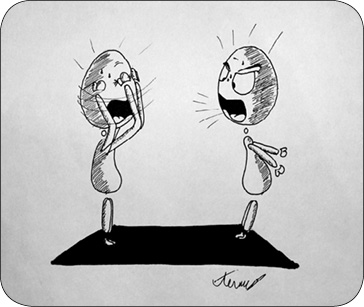
Next page

